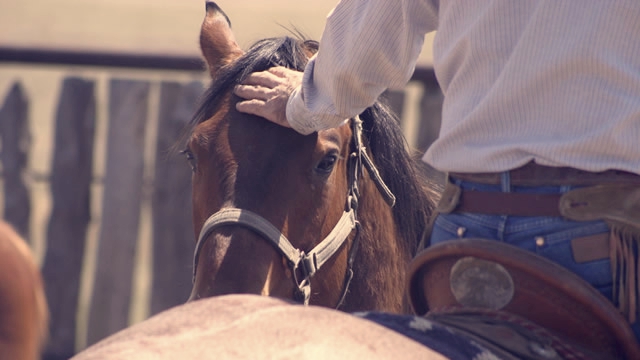Written by Martin Black
This article originally appeared in Eclectic Horseman Issue No.33
The way we catch our horses can reflect a lot about our understanding of them and their outlook toward us. If we could only see through their eyes at how they look at us, how they interpret our actions, we might be a lot more considerate of their reactions.
Based on previous experience, genetics and environment, different horses may react differently. They all have their own level of self-preservation. Part of their self-preservation instinct is to be suspicious of man and other predators. This is why when a horse’s head comes up and his eye is higher than his withers he is on the alert for the predator. We may need to identify his action for what it is, offer the horse a more non- threatening approach and not trigger his suspicion or fear.
Personally, I don’t like to use treats to chum them into being caught or intimidate them by threatening gestures or hitting them over the rump to convince them there is a greater evil. By this I mean they only accept or tolerate us because we have made the other options more painful or fearful. Although we may need some restrictions or a treat in the introduction in order to get close to them, I would prefer to be able to convince them that they can get a good feeling from my presence by rubbing and scratching them. Most any horse will have dead hair or itchy skin that will feel good to them when we scratch it. Light, gentle petting will not accomplish this on a suspicious horse. A light touch might tickle, scare or annoy the horse whereas a firm rubbing or scratching in the right place will be well received. Like when we want our back scratched and need someone else to help us out. If that is what they associate our approach with next time, they will welcome us and we won’t need a treat or have to intimidate them.
Regardless of how we get our hands on them, we can accommodate them by rubbing them where the flies pick on them and they have a hard time defending themselves, like their bellies, under their jaw, their chest or scratching other hard-to-reach places like their mane, withers, windpipe and around their face. All of this can help us to become a useful friend to our horses without the need of a treat or a type of confinement.
This is a large part of why one horse will bond with another. There is no relation to any nutritional, hormonal, or protection of being in the herd, only the good feeling the other horse can offer by scratching the other horse’s itchy spots. We can offer our horses this same comfort anytime, anywhere, and we don’t need any special equipment to do it.
If the horse learns to relate our presence with getting rubbed and not any discomfort that may go along with getting caught, he can have good thoughts relating to our presence. But if the experience of fumbling a halter around his sensitive muzzle, eyes or ears makes a more lasting impression, he may not look forward to the next experience.
When we rub them with our hands and they lean into our hand, if we stop and step back and leave them when they are wanting more, they will be left with a better impression than if we rub them until they have had enough and leave us when it is their idea. We want to leave them with their idea being that they want more of us.
This article originally appeared in Eclectic Horseman Issue No.33


